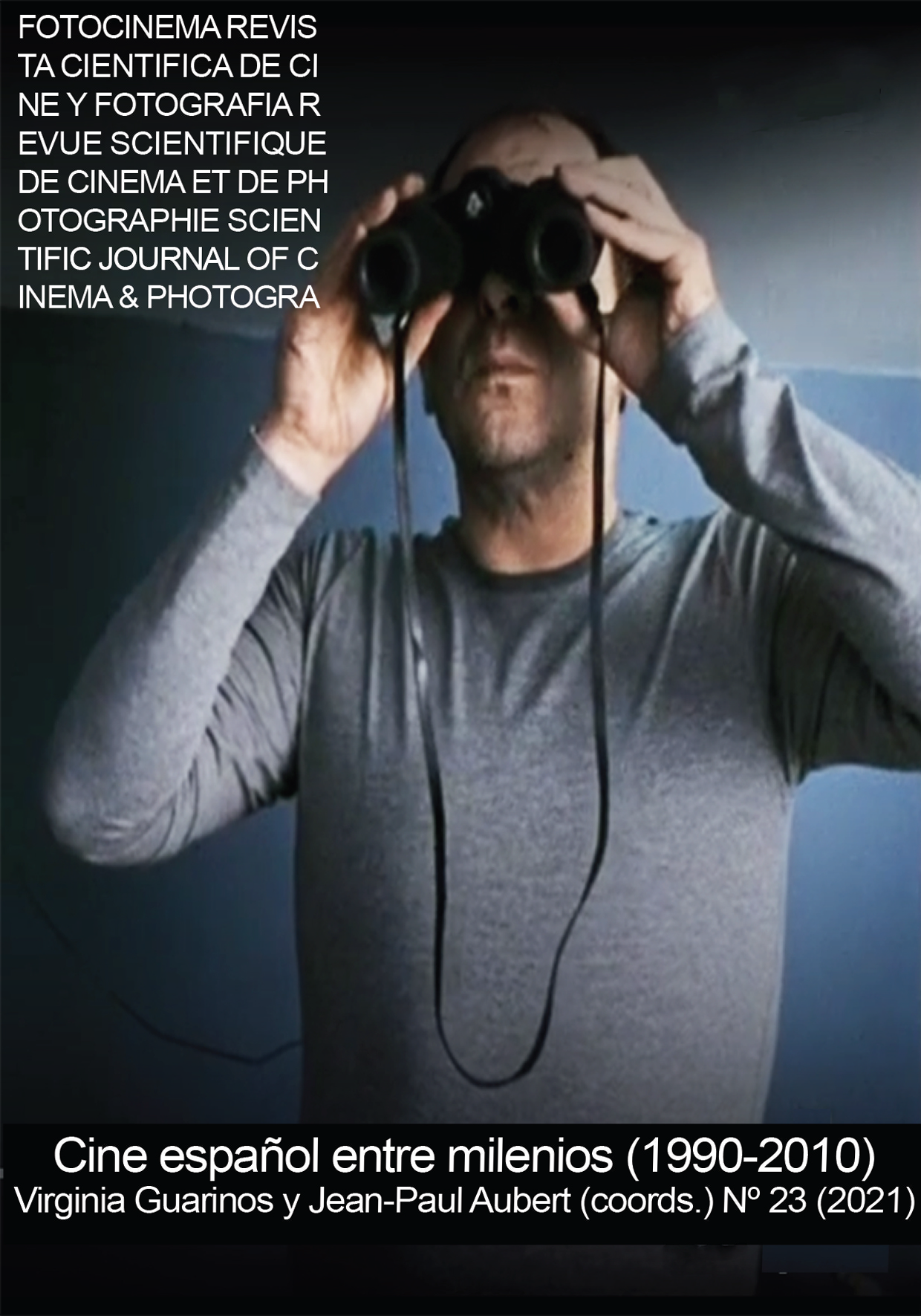The process of maturity of the filmic character. The case of Lucia in Silencio roto, by Montxo Armendáriz
DOI:
https://doi.org/10.24310/Fotocinema.2021.v23i.10066Keywords:
Audiovisual narrative, film character, fiction, hero, evolution, Joseph CampbellAbstract
The hero with a thousand faces (Joseph Campbell, 1949) is considered an obligatory reference for writers who will write the story of a feature film. This study aims to corroborate that contemporary cinema often follows the patterns discovered by the American mythologist. Through the analysis of Lucía in Silencio roto (Armendáriz, 2001), it aims to understand the keys that expose the initiatory process of the film character with the aim of knowing about the suitability of the application of these patterns in the narratives of today's cinema. The approach chosen by the director is ideal to transmit the evolution he wants to show, since this type of focalization helps to identify the viewer.
Downloads
Metrics
Publication Facts
Reviewer profiles N/A
Author statements
Indexed in
-
—
- Academic society
- N/A
- Publisher
- Universidad de Málaga
References
Aguilar Carrasco, P. (2010). El análisis audiovisual: un puente entre los valores pensados y los valores sentidos. Tabanque Revista pedagógica, núm. 23, 69-82.
Campbell, J. (1990). El héroe de las mil caras: psicoanálisis del mito (trad. Hernández, J. F.). México DF: Fondo de Cultura Económica. (Original publicado en 1949).
Casetti, F. y Di Chio, F. (1991). Cómo analizar un film. Barcelona: Paidós.
Cervera C. y Cabanelas L. M., “Los 18 errores históricos de Mientras dure la guerra, la película sobre Franco y Unamuno de Amenábar”, ABC, 29 de octubre de 2019 [consultado el 18 de noviembre de 2019].
García Landa, J. A. (1998). Acción, relato, discurso. Estructura de la ficción narrativa. Salamanca: Ediciones Universidad de Salamanca.
Gaudrealult, A. y Jost, F. (1995). El relato cinematográfico. Cine y narratología. Barcelona: Paidós Ibérica.
Henderson, M. (2005). Star Wars: La magia del mito. Barcelona: Círculo Latino.
Martínez Gil, F. (2013). La historia y el cine: ¿unas amistades peligrosas? Vínculos de Historia, núm. 2, 351-372.
Marzabal, I. (2004). Deliberaciones poéticas. Cine y ética narrativa. Bilbao: Servicio editorial de la Universidad del País Vasco/Euskal Herriko Unibertsitatea.
Pampín A. G. (2015). El viaje turístico como viaje sagrado: análisis de experiencias turísticas desde la mitología y función psicológica del mito. Anais Brasileiros de Estudos Turísticos, vol. 5, núm. 1, 8-21.
Pérez Rufí, J. P. (2016). Metodología de análisis del personaje cinematográfico: Una propuesta desde la narrativa fílmica. Razón y palabra, núm. 95, 534-552.
Rosenstone, Robert A. (1997). El pasado en imágenes. El desafío del cine a nuestra idea de la historia. Barcelona: Ariel Historia.
Seger, L. (1994). Cómo convertir un buen guion en un guion excelente. Madrid: Rialp.
Vogler, C. (2002). El viaje del escritor. Las estructuras míticas para escritores, guionistas, dramaturgos y novelistas. Barcelona: Ediciones Robinbook.
Downloads
Published
How to Cite
Issue
Section
License
All contents published in Fotocinema Revista científica de cine y fotografía are protected under the Creative Commons Attribution-NonCommercial-ShareAlike 4.0 International (CC BY-NC-SA 4.0) license. All about this license is available in the following link: <http://creativecommons.org/licenses/by-nc-sa/4.0>
Users can copy, use, redistribute, share and exhibit publicly as long as:
- The original source and authorship of the material are cited (Journal, Publisher and URL of the work).
- It is not used for comercial purposes.
- The existence of the license and its especifications are mentioned.
There are two sets of authors’ rights: moral and property rights. Moral rights are perpetual prerogatives, unrenounceable, not-transferable, unalienable, imprescriptible and inembargable. According to authors’ rights legislation, Fotocinema. Revista científica de cine y fotografía recognizes and respects authors moral rights, as well as the ownership of property rights, which will be transferred to University of Malaga in open access. The property rights are referred to the benefits that are gained by the use or the dissemination of works. Fotocinema. Revista científica de cine y fotografía is published in an open access form and it is exclusively licenced by any means for doing or authorising distribution, dissemination, reproduction, , adaptation, translation or arrangement of works.
Authors are responsable for obtaining the necessary permission to use copyrighted images.














13.png)



